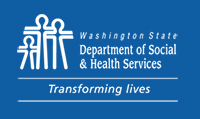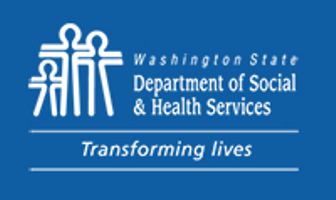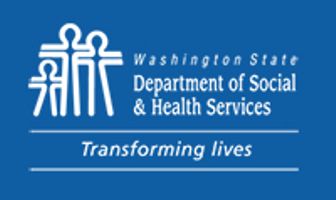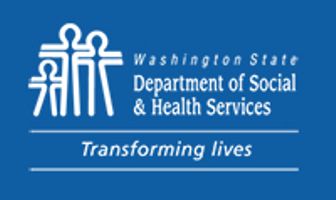Title Page
-
Conducted on
-
Prepared by
-
Location
-
Detailed Location
- GPU Common areas
- ***AT Bldg/TX Mall***
- GPU Food Service West Lake / Pod H
- 3N1 APU
- GPU Pod HMH
- HR / IT / Safety Offices / Rehab Offices /
- 1S1 FSU
- GPU Pod B
- Food Service East Lake-both levels
- 1N1 APU
- Security / PERT /Social Work / FSU Psychology Area / Med Staff Office
- GPU Pod D
- 2N1 APU
- FSU/APU/AT Bldg Yard Spaces/Sidewalks
- 2S1 FSU
- Educational Services
- GPU Pod E
- Dental Office 0N3 / Psychology Area
- 2N3 FSU
- GPU Lab
- Medical Records / SB / Accounting-includes patient funds /Admin / CNO /
- Pharmacy
- GPU OT and Rehab Areas
- ETRU
- 3S1 FSU
- 0N3 Offices / Central Supply / Housekeeping / Basement Corridor / QM
- ***1N3***New ward scheduled to open 1 Jul 20
- ***3N3***New ward scheduled to open 1 Jul 20
Fire and Life Safety (FLS) EOC Inspection
-
FLS 1. Extinguishers are visible, readily accessible, and mounted no higher than 5 ft. above the floor to the top of the handle?
-
What is the likelihood to harm a patient / staff / Visitor?
- High: Could directly lead to harm without need for other significant circumstances or failures.--Likely
- Moderate: Could cause harm directly, but more likely to cause harm as a contributing factor in the presence of special circumstances or additional failures.--Possible
- Low: Undermines safety/quality or contributes to an unsafe environment, but very unlikely to directly contribute to harm.--Rare
-
Is the problem…
- Widespread: issue is “pervasive at the organization” --Process failure/systemic failure --Majority of patients are/could be impacted
- Pattern: issue has potential to “impact more than a limited number of patients impacted” -- Process variation -- > or = 3 but less than 50% patients impacted
- Limited: issue is a “unique occurrence” -- Outlier -- Not representative of routine/regular practice
-
FLS 2. Extinguishers are serviced and tagged annually by a fire extinguisher service contractor.
-
What is the likelihood to harm a patient / staff / Visitor?
- High: Could directly lead to harm without need for other significant circumstances or failures.--Likely
- Moderate: Could cause harm directly, but more likely to cause harm as a contributing factor in the presence of special circumstances or additional failures.--Possible
- Low: Undermines safety/quality or contributes to an unsafe environment, but very unlikely to directly contribute to harm.--Rare
-
Is the problem
- Widespread: issue is “pervasive at the organization” --Process failure/systemic failure --Majority of patients are/could be impacted
- Pattern: issue has potential to “impact more than a limited number of patients impacted” -- Process variation -- > or = 3 but less than 50% patients impacted
- Limited: issue is a “unique occurrence” -- Outlier -- Not representative of routine/regular practice
-
FLS 3. Fire alarm pull station are: Maintained accessible with 36" clearance in all directions... Area staff are familiar with their location(s)...If secured, staff carry key/access capability
-
What is the likelihood to harm a patient / staff / Visitor?
- High: Could directly lead to harm without need for other significant circumstances or failures.--Likely
- Moderate: Could cause harm directly, but more likely to cause harm as a contributing factor in the presence of special circumstances or additional failures.--Possible
- Low: Undermines safety/quality or contributes to an unsafe environment, but very unlikely to directly contribute to harm.--Rare
-
Is the problem...
- Widespread: issue is “pervasive at the organization” --Process failure/systemic failure --Majority of patients are/could be impacted
- Pattern: issue has potential to “impact more than a limited number of patients impacted” -- Process variation -- > or = 3 but less than 50% patients impacted
- Limited: issue is a “unique occurrence” -- Outlier -- Not representative of routine/regular practice
-
FLS 4. Are smoke detectors Properly installed & free of physical damage
-
What is the likelihood to harm a patient / staff / Visitor?
- High: Could directly lead to harm without need for other significant circumstances or failures.--Likely
- Moderate: Could cause harm directly, but more likely to cause harm as a contributing factor in the presence of special circumstances or additional failures.--Possible
- Low: Undermines safety/quality or contributes to an unsafe environment, but very unlikely to directly contribute to harm.--Rare
-
Is the problem...
- Widespread: issue is “pervasive at the organization” --Process failure/systemic failure --Majority of patients are/could be impacted
- Pattern: issue has potential to “impact more than a limited number of patients impacted” -- Process variation -- > or = 3 but less than 50% patients impacted
- Limited: issue is a “unique occurrence” -- Outlier -- Not representative of routine/regular practice
-
FLS 5. Defective or compromised sprinkler heads (recalled, corroded, painted) are replaced.
-
What is the likelihood to harm a patient / staff / Visitor?
- High: Could directly lead to harm without need for other significant circumstances or failures.--Likely
- Moderate: Could cause harm directly, but more likely to cause harm as a contributing factor in the presence of special circumstances or additional failures.--Possible
- Low: Undermines safety/quality or contributes to an unsafe environment, but very unlikely to directly contribute to harm.--Rare
-
Is the problem...
- Widespread: issue is “pervasive at the organization” --Process failure/systemic failure --Majority of patients are/could be impacted
- Pattern: issue has potential to “impact more than a limited number of patients impacted” -- Process variation -- > or = 3 but less than 50% patients impacted
- Limited: issue is a “unique occurrence” -- Outlier -- Not representative of routine/regular practice
-
FLS 6. Is 18” of clear space is maintained below sprinkler heads?
-
What is the likelihood to harm a patient / staff / Visitor?
- High: Could directly lead to harm without need for other significant circumstances or failures.--Likely
- Moderate: Could cause harm directly, but more likely to cause harm as a contributing factor in the presence of special circumstances or additional failures.--Possible
- Low: Undermines safety/quality or contributes to an unsafe environment, but very unlikely to directly contribute to harm.--Rare
-
Is the problem...
- Widespread: issue is “pervasive at the organization” --Process failure/systemic failure --Majority of patients are/could be impacted
- Pattern: issue has potential to “impact more than a limited number of patients impacted” -- Process variation -- > or = 3 but less than 50% patients impacted
- Limited: issue is a “unique occurrence” -- Outlier -- Not representative of routine/regular practice
-
FLS 7. Exit doors, aisles, corridors and stairs are free of obstructions and storage
-
What is the likelihood to harm a patient / staff / Visitor?
- High: Could directly lead to harm without need for other significant circumstances or failures.--Likely
- Moderate: Could cause harm directly, but more likely to cause harm as a contributing factor in the presence of special circumstances or additional failures.--Possible
- Low: Undermines safety/quality or contributes to an unsafe environment, but very unlikely to directly contribute to harm.--Rare
-
Is the problem...
- Widespread: issue is “pervasive at the organization” --Process failure/systemic failure --Majority of patients are/could be impacted
- Pattern: issue has potential to “impact more than a limited number of patients impacted” -- Process variation -- > or = 3 but less than 50% patients impacted
- Limited: issue is a “unique occurrence” -- Outlier -- Not representative of routine/regular practice
-
FLS 8. Exit and egress doors are prohibited from having special locking mechanisms that could delay an emergency egress such as special fasteners, chains, or deadbolts.
-
What is the likelihood to harm a patient / staff / Visitor?
- High: Could directly lead to harm without need for other significant circumstances or failures.--Likely
- Moderate: Could cause harm directly, but more likely to cause harm as a contributing factor in the presence of special circumstances or additional failures.--Possible
- Low: Undermines safety/quality or contributes to an unsafe environment, but very unlikely to directly contribute to harm.--Rare
-
Is the problem...
- Widespread: issue is “pervasive at the organization” --Process failure/systemic failure --Majority of patients are/could be impacted
- Pattern: issue has potential to “impact more than a limited number of patients impacted” -- Process variation -- > or = 3 but less than 50% patients impacted
- Limited: issue is a “unique occurrence” -- Outlier -- Not representative of routine/regular practice
-
FLS 9. Exit signs are visible, illuminated and the battery backup functions properly?
-
What is the likelihood to harm a patient / staff / Visitor?
- High: Could directly lead to harm without need for other significant circumstances or failures.--Likely
- Moderate: Could cause harm directly, but more likely to cause harm as a contributing factor in the presence of special circumstances or additional failures.--Possible
- Low: Undermines safety/quality or contributes to an unsafe environment, but very unlikely to directly contribute to harm.--Rare
-
Is the problem...
- Widespread: issue is “pervasive at the organization” --Process failure/systemic failure --Majority of patients are/could be impacted
- Pattern: issue has potential to “impact more than a limited number of patients impacted” -- Process variation -- > or = 3 but less than 50% patients impacted
- Limited: issue is a “unique occurrence” -- Outlier -- Not representative of routine/regular practice
-
FLS 10. Emergency lights are visible and operate.
-
What is the likelihood to harm a patient / staff / Visitor?
- High: Could directly lead to harm without need for other significant circumstances or failures.--Likely
- Moderate: Could cause harm directly, but more likely to cause harm as a contributing factor in the presence of special circumstances or additional failures.--Possible
- Low: Undermines safety/quality or contributes to an unsafe environment, but very unlikely to directly contribute to harm.--Rare
-
Is the problem...
- Widespread: issue is “pervasive at the organization” --Process failure/systemic failure --Majority of patients are/could be impacted
- Pattern: issue has potential to “impact more than a limited number of patients impacted” -- Process variation -- > or = 3 but less than 50% patients impacted
- Limited: issue is a “unique occurrence” -- Outlier -- Not representative of routine/regular practice
-
FLS 11. Are stair exit enclosures: Free of storage, Free of penetrations other than those that serve the enclosure
-
What is the likelihood to harm a patient / staff / Visitor?
- High: Could directly lead to harm without need for other significant circumstances or failures.--Likely
- Moderate: Could cause harm directly, but more likely to cause harm as a contributing factor in the presence of special circumstances or additional failures.--Possible
- Low: Undermines safety/quality or contributes to an unsafe environment, but very unlikely to directly contribute to harm.--Rare
-
Is the problem...
- Widespread: issue is “pervasive at the organization” --Process failure/systemic failure --Majority of patients are/could be impacted
- Pattern: issue has potential to “impact more than a limited number of patients impacted” -- Process variation -- > or = 3 but less than 50% patients impacted
- Limited: issue is a “unique occurrence” -- Outlier -- Not representative of routine/regular practice
-
FLS 12. Combustibles such as cardboard, paper, linen, wastes, etc. are kept to a minimum for daily use?
-
What is the likelihood to harm a patient / staff / Visitor?
- High: Could directly lead to harm without need for other significant circumstances or failures.--Likely
- Moderate: Could cause harm directly, but more likely to cause harm as a contributing factor in the presence of special circumstances or additional failures.--Possible
- Low: Undermines safety/quality or contributes to an unsafe environment, but very unlikely to directly contribute to harm.--Rare
-
Is the problem...
- Widespread: issue is “pervasive at the organization” --Process failure/systemic failure --Majority of patients are/could be impacted
- Pattern: issue has potential to “impact more than a limited number of patients impacted” -- Process variation -- > or = 3 but less than 50% patients impacted
- Limited: issue is a “unique occurrence” -- Outlier -- Not representative of routine/regular practice
-
FLS 13. Are Smoke Barrier Doors:▪ Legibly labelled (if applicable)▪ Self-closing▪ Positive latching (if applicable)▪ Not wedged or manually held-open
-
What is the likelihood to harm a patient / staff / Visitor?
- High: Could directly lead to harm without need for other significant circumstances or failures.--Likely
- Moderate: Could cause harm directly, but more likely to cause harm as a contributing factor in the presence of special circumstances or additional failures.--Possible
- Low: Undermines safety/quality or contributes to an unsafe environment, but very unlikely to directly contribute to harm.--Rare
-
Is the problem...
- Widespread: issue is “pervasive at the organization” --Process failure/systemic failure --Majority of patients are/could be impacted
- Pattern: issue has potential to “impact more than a limited number of patients impacted” -- Process variation -- > or = 3 but less than 50% patients impacted
- Limited: issue is a “unique occurrence” -- Outlier -- Not representative of routine/regular practice
-
FLS 14. Are Fire rated Doors:▪ Legibly labelled▪ Self-closing▪ Positive latching▪ Not wedged or manually held-open?
-
What is the likelihood to harm a patient / staff / Visitor?
- High: Could directly lead to harm without need for other significant circumstances or failures.--Likely
- Moderate: Could cause harm directly, but more likely to cause harm as a contributing factor in the presence of special circumstances or additional failures.--Possible
- Low: Undermines safety/quality or contributes to an unsafe environment, but very unlikely to directly contribute to harm.--Rare
-
Is the problem...
- Widespread: issue is “pervasive at the organization” --Process failure/systemic failure --Majority of patients are/could be impacted
- Pattern: issue has potential to “impact more than a limited number of patients impacted” -- Process variation -- > or = 3 but less than 50% patients impacted
- Limited: issue is a “unique occurrence” -- Outlier -- Not representative of routine/regular practice
-
FLS 15. Are Hazardous Area Doors:▪ Legibly labelled (if applicable)▪ Smoke resistive▪ Self-closing ▪Positive latching?
-
What is the likelihood to harm a patient / staff / Visitor?
- High: Could directly lead to harm without need for other significant circumstances or failures.--Likely
- Moderate: Could cause harm directly, but more likely to cause harm as a contributing factor in the presence of special circumstances or additional failures.--Possible
- Low: Undermines safety/quality or contributes to an unsafe environment, but very unlikely to directly contribute to harm.--Rare
-
Is the problem...
- Widespread: issue is “pervasive at the organization” --Process failure/systemic failure --Majority of patients are/could be impacted
- Pattern: issue has potential to “impact more than a limited number of patients impacted” -- Process variation -- > or = 3 but less than 50% patients impacted
- Limited: issue is a “unique occurrence” -- Outlier -- Not representative of routine/regular practice
-
FLS 16. Are Corridors doors (including patient room doors:▪ Smoke resistive▪ Positive latching▪ Not wedged or manually held-open?
-
What is the likelihood to harm a patient / staff / Visitor?
- High: Could directly lead to harm without need for other significant circumstances or failures.--Likely
- Moderate: Could cause harm directly, but more likely to cause harm as a contributing factor in the presence of special circumstances or additional failures.--Possible
- Low: Undermines safety/quality or contributes to an unsafe environment, but very unlikely to directly contribute to harm.--Rare
-
Is the problem...
- Widespread: issue is “pervasive at the organization” --Process failure/systemic failure --Majority of patients are/could be impacted
- Pattern: issue has potential to “impact more than a limited number of patients impacted” -- Process variation -- > or = 3 but less than 50% patients impacted
- Limited: issue is a “unique occurrence” -- Outlier -- Not representative of routine/regular practice
-
FLS 17. Are door free of signage at less than 5%; none on glazing.
-
What is the likelihood to harm a patient / staff / Visitor?
- High: Could directly lead to harm without need for other significant circumstances or failures.--Likely
- Moderate: Could cause harm directly, but more likely to cause harm as a contributing factor in the presence of special circumstances or additional failures.--Possible
- Low: Undermines safety/quality or contributes to an unsafe environment, but very unlikely to directly contribute to harm.--Rare
-
Is the problem...
- Widespread: issue is “pervasive at the organization” --Process failure/systemic failure --Majority of patients are/could be impacted
- Pattern: issue has potential to “impact more than a limited number of patients impacted” -- Process variation -- > or = 3 but less than 50% patients impacted
- Limited: issue is a “unique occurrence” -- Outlier -- Not representative of routine/regular practice
-
FLS 18. Do you have any additional comments? If so, please add them here.
-
Add media











